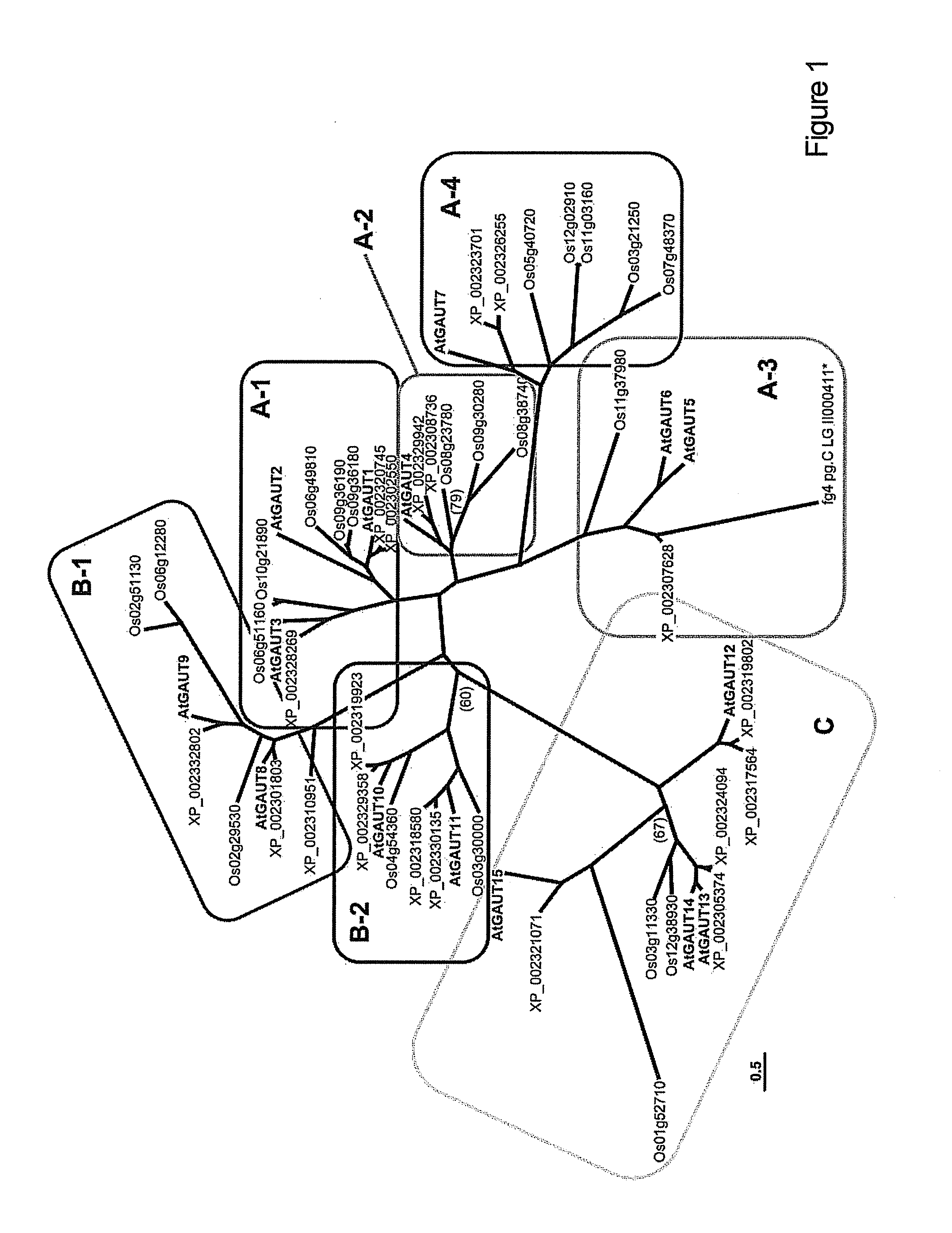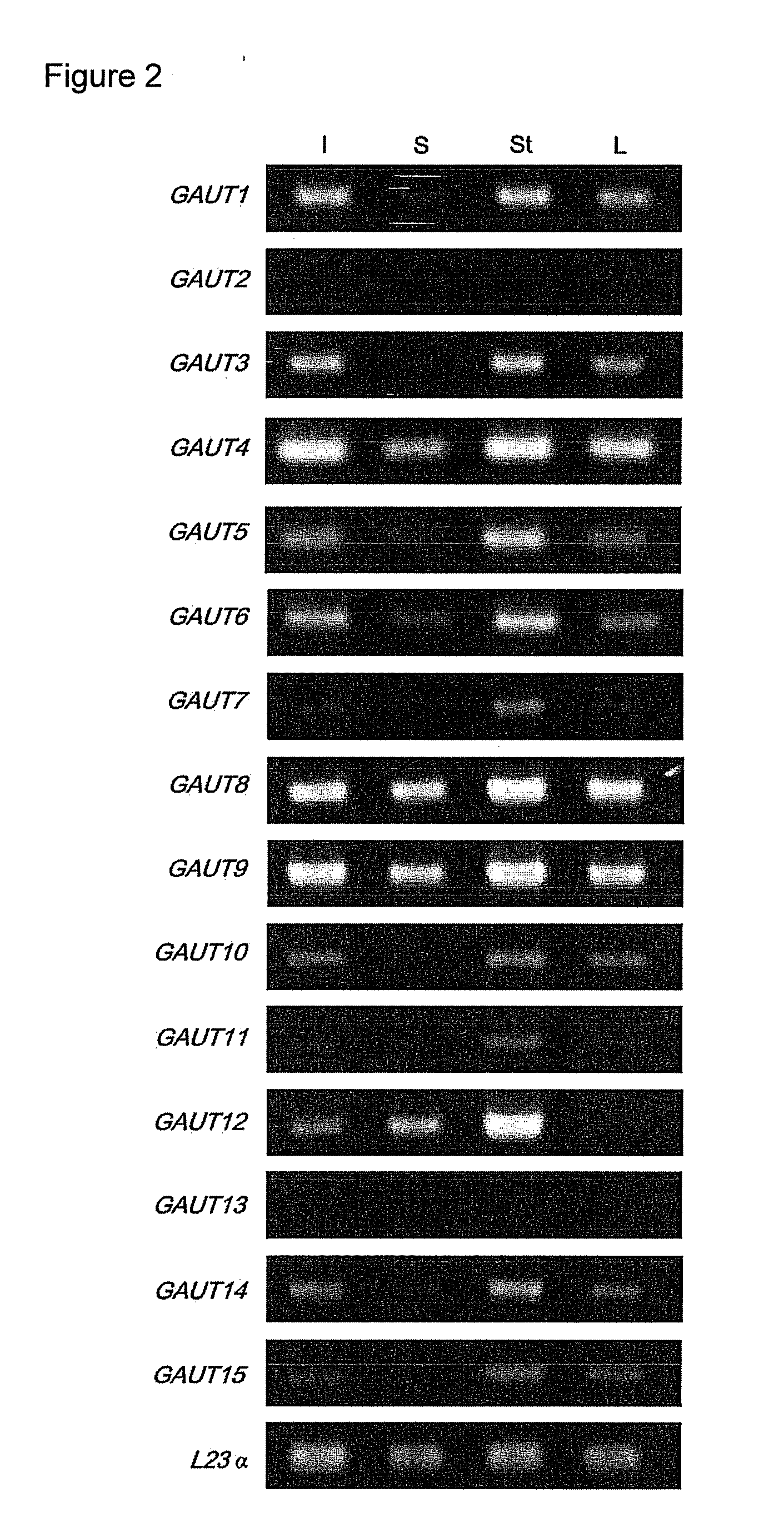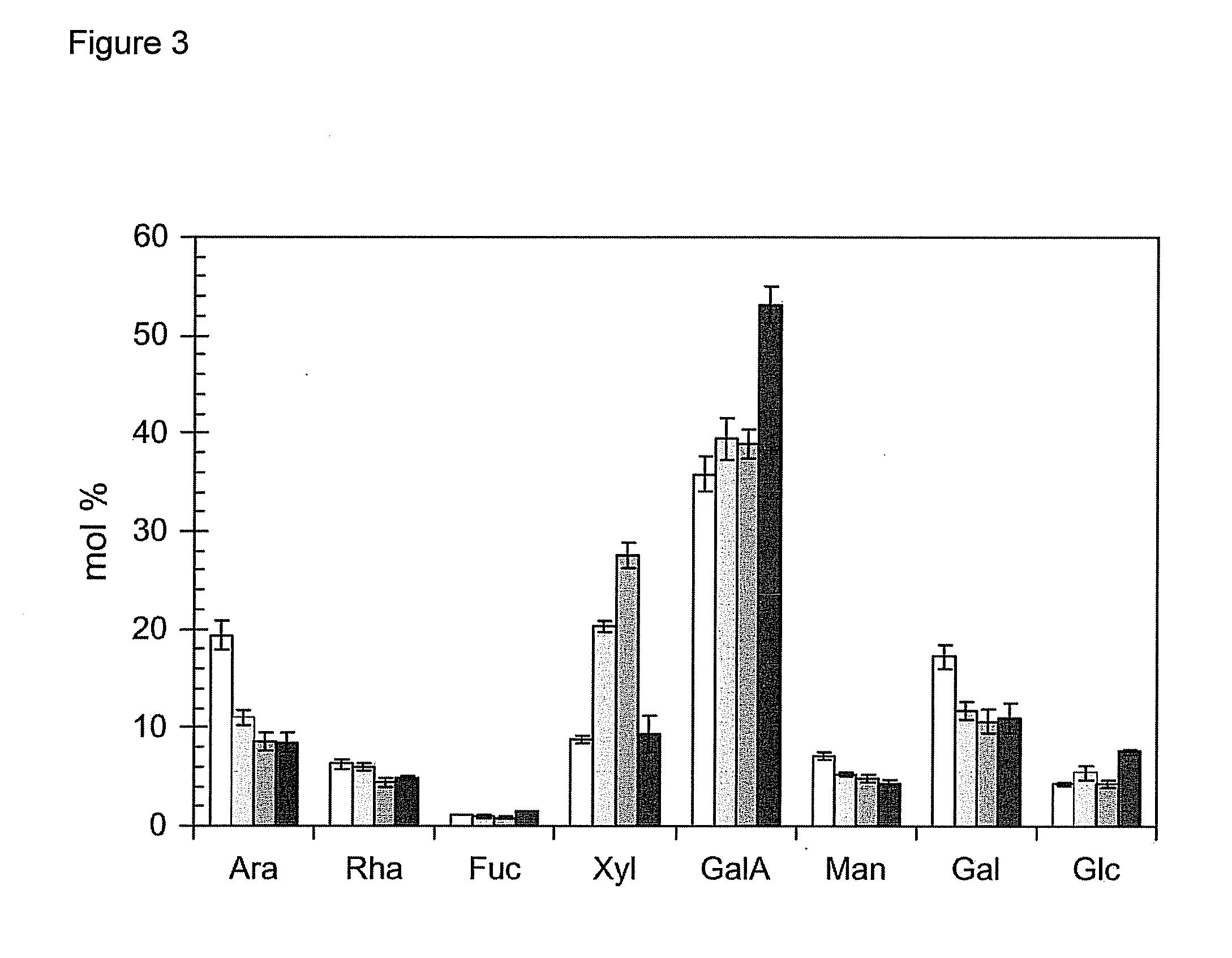Plants with altered cell wall biosynthesis and methods of use
- Summary
- Abstract
- Description
- Claims
- Application Information
AI Technical Summary
Benefits of technology
Problems solved by technology
Method used
Image
Examples
example 1
Methods
[0137]Sequence Alignment of GAUT Family Proteins and Phylogenetic Analysis
[0138]Protein sequences were identified by BLASTsearch of Arabidopsis thaliana (www.Arabidopsis.org / index.jsp), Oryza sativa (www.tigr.org / tdb / e2k1 / osa1 / ), and Populus trichocarpa (http: / / genome.jgi-psf.org / Poptr1—1 / Poptr1—1.home.html) genomes, using AtGAUT1 as the search probe. The GAUT protein sequences were aligned using ClustalX (Thompson et al., 1997, Nucleic Acids Res. 24, 4876-4882) and suggested protein alignment parameters (Hall, B. G. 2004, Phylogenetic Trees Made Easy: A How-To Manual, 2nd ed, (Sunderland, M A: Sinauer Associates, Inc.), pp 29-30). Phylogenetic Bayesian analysis was carried out employing MrBayes (Huelsenbeck and Ronquist, 2001, Bioinformatics. 17, 754-755; Ronquist and Huelsenbeck, 2003, Bioinformatics, 19, 1574). Full-length protein sequences were used in the analysis for all proteins except Os09g36180, whose C-terminal 404 amino acid extension was excluded.
[0139]Plant Mater...
example 2
Materials and Methods
[0195]Plant Materials and Growth Conditions. Two independent T-DNA insertion lines (00091 and 02925) in GAUT14 were obtained from the Arabidopsis Biological Resource Center (www.biosci.ohio-state.edu / pcmb / Facilities / abrc / abrchome.htm). Arabidopsis WT (Arabidopsis thaliana var. Columbia S6000) and gaut14 mutant seeds were sown on pre-moistened soil in a growth chamber with 60% constant relative humidity with a photoperiod 14 / 10 light / dark cycle (14 h 19° C. and 10 h 19° C.) and fertilized as described (Example 1). The 7-weeks old WT and PCR-genotyped mutant plants were harvested used for glycome profiling and as a carbon source for bacterial growth analyses.
[0196]DNA Extraction, mutant genotyping and identification of two T-DNA insertion lines in GAUT14. Approximately 100 mg of leaf tissue was ground with a mortar and pestle to fine powder. The ground leaf tissue was suspended in 0.5 ml extraction buffer (100 mM EDTA pH 8.0, 100 mM Tris-HCl pH 8.0, 250 mM NaCl, 1...
PUM
| Property | Measurement | Unit |
|---|---|---|
| Fraction | aaaaa | aaaaa |
| Volume | aaaaa | aaaaa |
| Volume | aaaaa | aaaaa |
Abstract
Description
Claims
Application Information
 Login to View More
Login to View More - R&D
- Intellectual Property
- Life Sciences
- Materials
- Tech Scout
- Unparalleled Data Quality
- Higher Quality Content
- 60% Fewer Hallucinations
Browse by: Latest US Patents, China's latest patents, Technical Efficacy Thesaurus, Application Domain, Technology Topic, Popular Technical Reports.
© 2025 PatSnap. All rights reserved.Legal|Privacy policy|Modern Slavery Act Transparency Statement|Sitemap|About US| Contact US: help@patsnap.com



